The long unseen image of James C. Sutton, first published in my last post Rarer than Rare, took my breath away. Hope it did yours as well. Far too many times to recall I have been able to share with my readers images and documents that have never been seen in public. Often they have never even been photographed prior to their being posted in my blog.
This is all due to the incredible generosity of the owners. Laura Varilek, of Rapid City, SD, was doing some research on her multiple greats grandfather James Sutton when she found some of my earlier posts. In this way we connected and the rest is, as they say, Maplewood history. (Sorry. Sometimes it’s hard to think of anything unusual to put in these lead-ins.)
Ms. Varilek was kind enough to include some other items that I believe you will find interesting. Let’s have a look at them. First is a typewritten letter that was a little difficult to read. I retyped it as accurately as possible. (The errors are somebody else’s this time.)
Trip of Maplewood, Mo. Natives to Montana – 1864
Marshall Phillips and Chas. W. Sutton left on train and joined others at St. Joseph. Crossed Missouri River at Brownsville. Laid between Brownsville and Nebraska City 10 days to rest cattle. Loaded provisions at Nebr. City – traveled on and camped about 2 ½ miles out. Cattle broke away hunting water, only one pony left. Hunted for them until about 1 p.m. and found them about 1 ½ miles north around a big lake. Then headed for Platte River. Passed through Ft. Kearney on second day. Crossed Platte at Lone Tree about 20 miles below Denver; about 2 miles wide & very high. Took about two days to cross. Camped on west side and from there northwest to Ash Hollow, a steep place. Had to tie cattle on behind to hold wagons back. Followed up along river to Ft. Laramie and crossed there. From there N.W. to Divide. Camped on Sweet Water base of Rocky Mts. on July 3rd. Water froze there that night. Small camp of soldiers there. Four or five letters given to them but only one went through. Took Landseth cut-off to Snake River. Had Indian family as guide. Took about 8 weeks to go to Snake River; Indians stood guard. Took wagons across river on boat. Cattle had to swim. Had to wait for sun to set because cattle would not swim against it. Indians couldn’t cross for fear of being scalped by other tribe. Drove about a mile north and camped one day and night before going on to desert. Crossed at night and had to layover in daytime. Took two nights. Camped and rested at the mountains for two days.
(This story was told to Sarah H. Holmes by Uncle Bob (Robert H.) Phillips. The trip was made by a group of St. Louis area men in 1864 who were southern-sympathizers and were having trouble with the Federal authorities. They were ordered to leave Missouri or go to jail. They spent a good share of time with the Crow Indians in Montana and came home 1866. They left St. Louis Mar. 29, 1864 and reached Virginia City, Mont. (Aug.?)15, 1864.)
The following men composed this group: – Robert H. Phillips, Merritt Marshall, Chas. Sutton, Johnson Harrison, Jim Taylor, John Clayton, (Wm.?) McBride, Chas. Harrison, Tom Harrison, Ben Gibson, Phil Tippet, Jim McCoullough, (Commodore?) Walton, (Dan?) Walton, (Lack?) Walton, Jim Walton, Darby & 2 sons, Buster (Himes?), Joe and Henry Patterson, ____ Harris, ___ Blackmar.
From the collection of Laura Varilek of Rapid City, SD, descendant of Sarah Wilgus Sutton.
Copied by Doug Houser, Maplewood historian, March 23, 2021
A letter like this is invaluable. I have done a post in the past on Merritt Marshall.
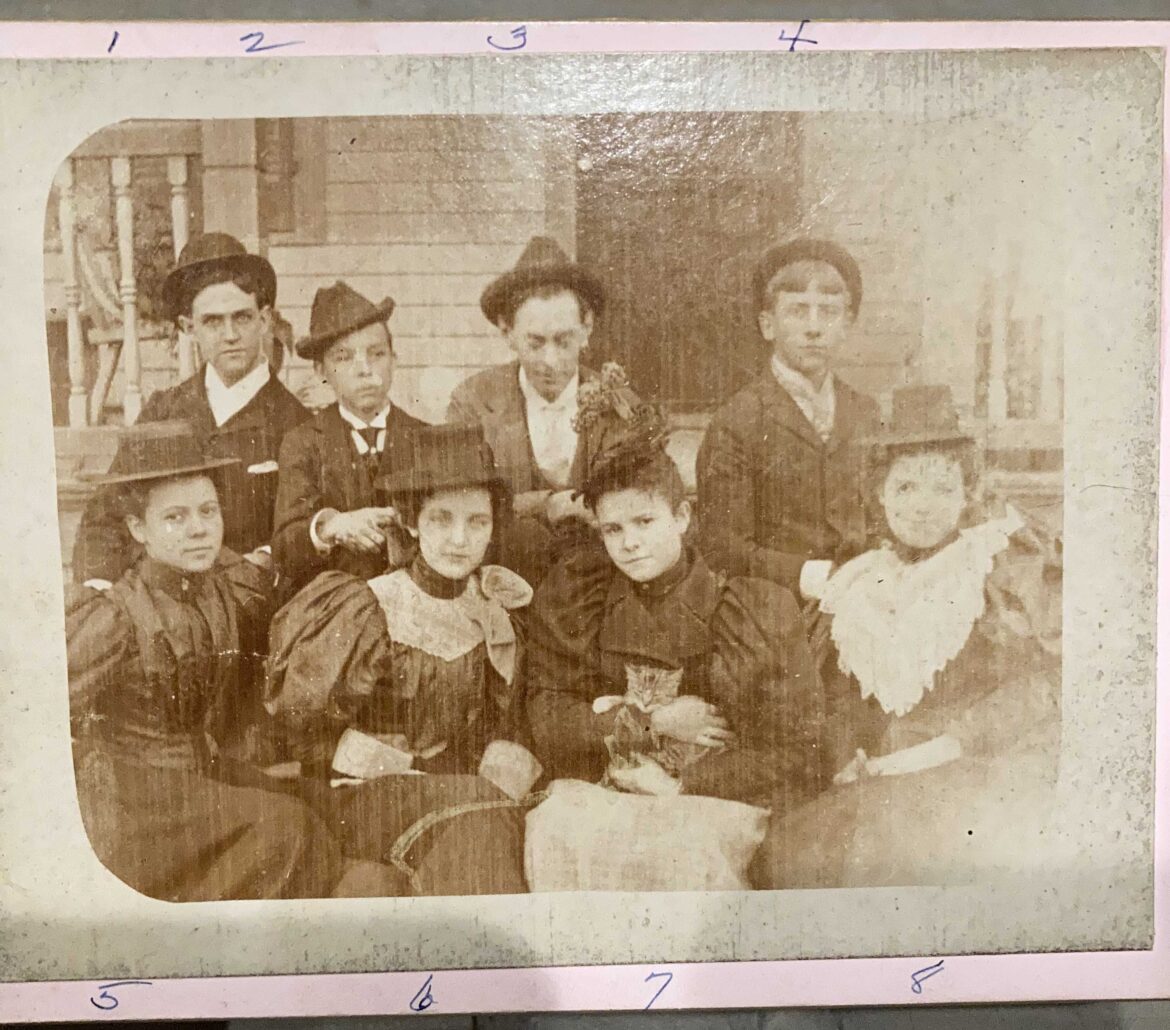
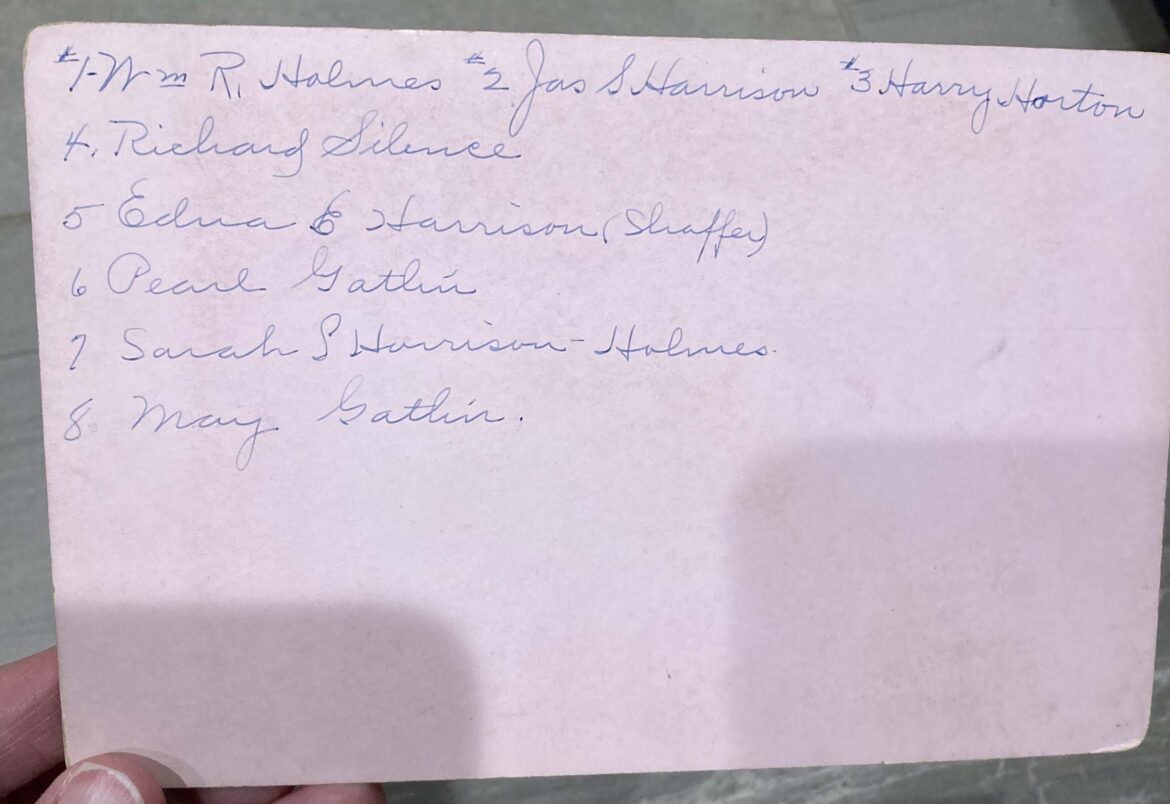
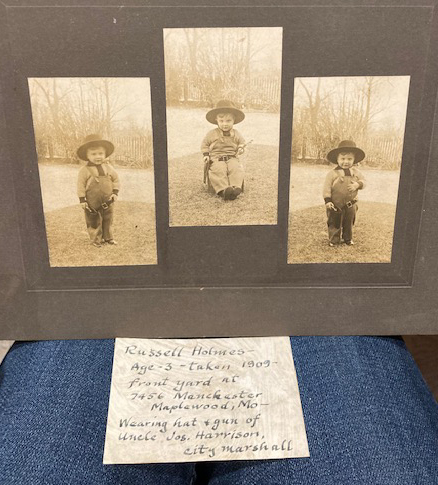
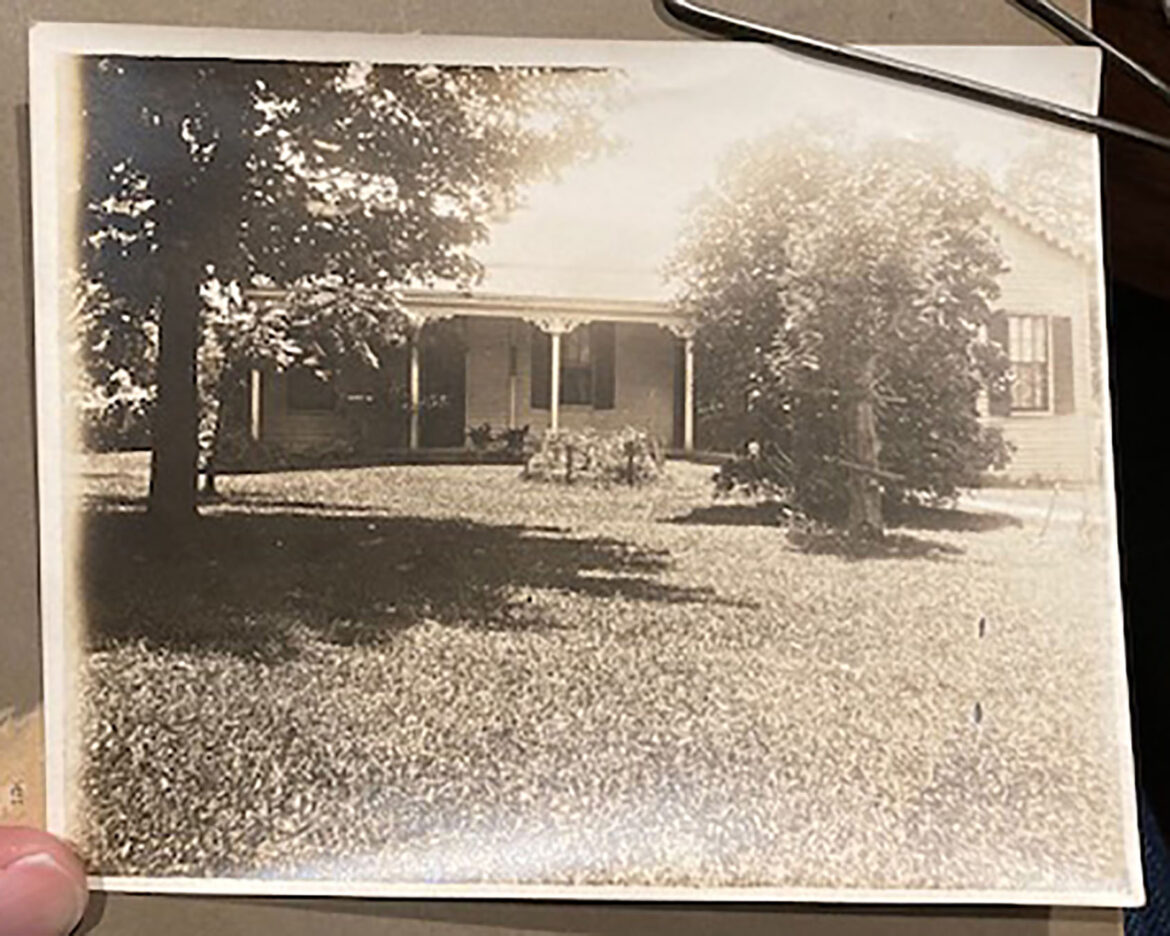
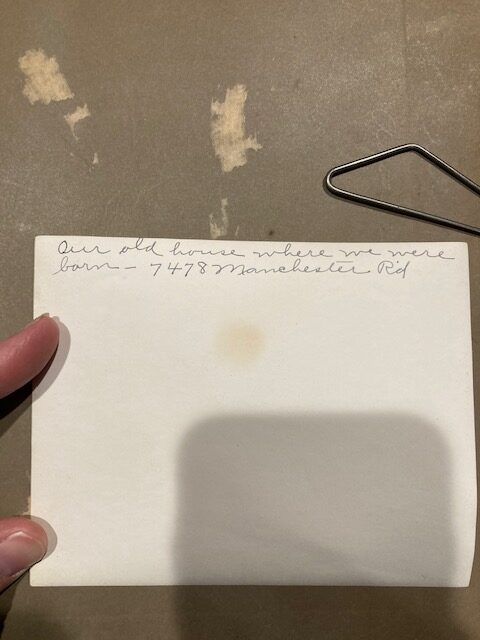
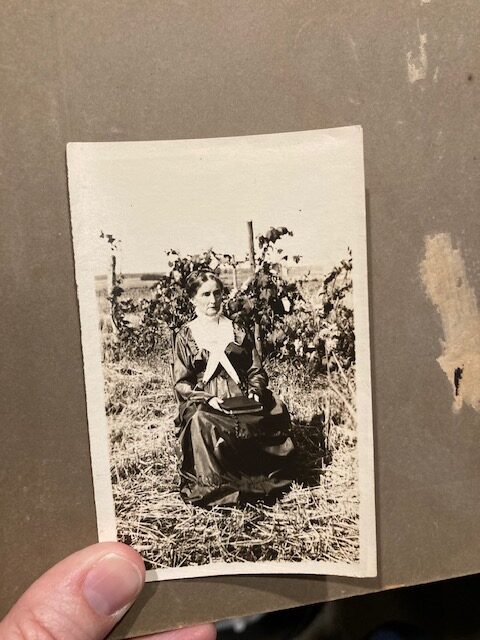
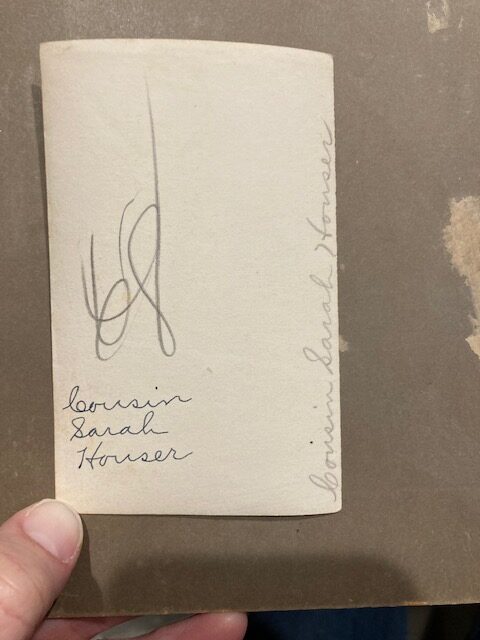
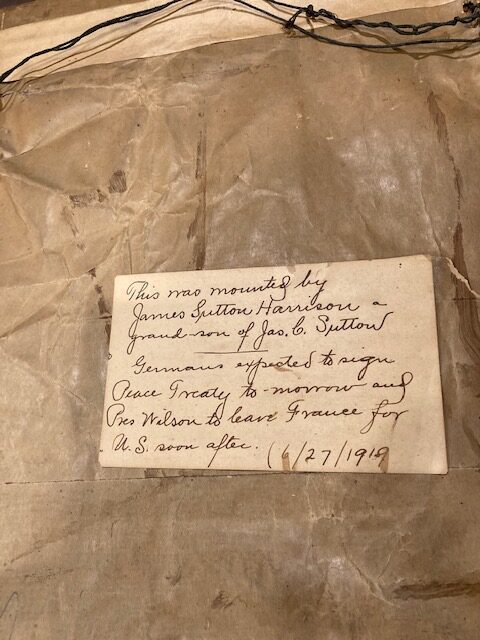
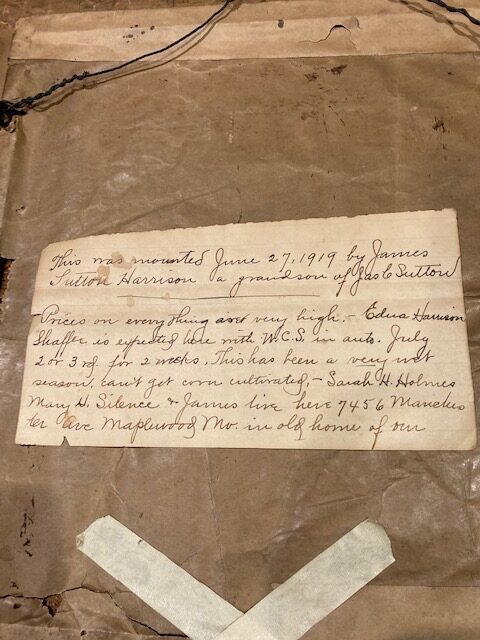
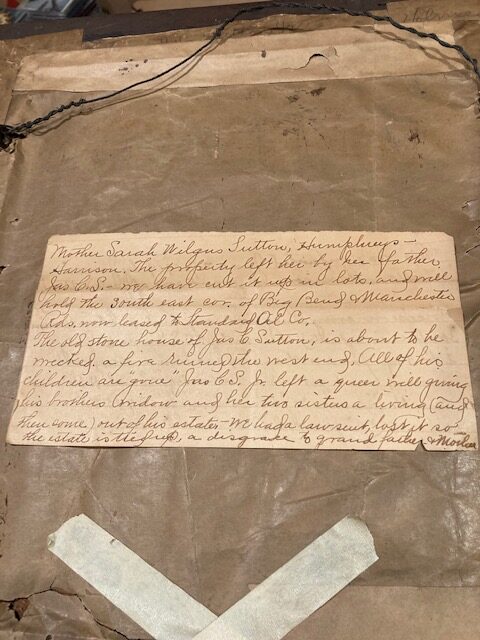
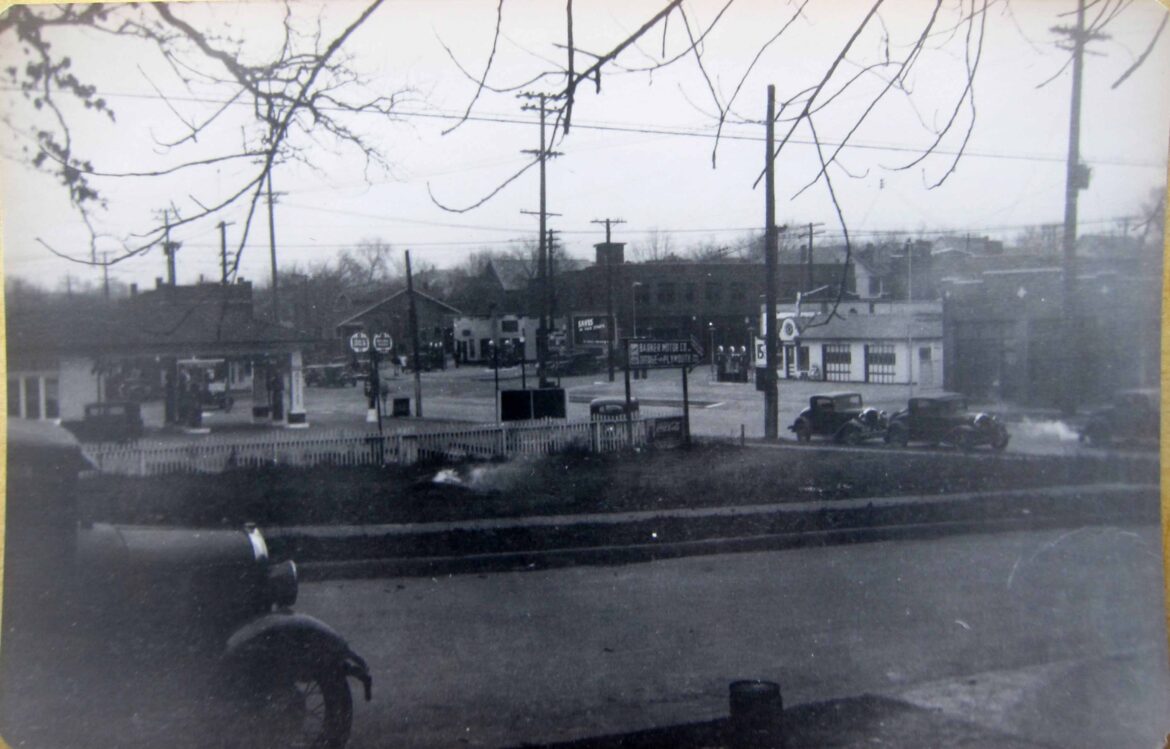
Also on that last message from James Harrison, he states that, “The old stone house… is about to be wrecked. A fire ruined the west end.” He wrote this in 1919.
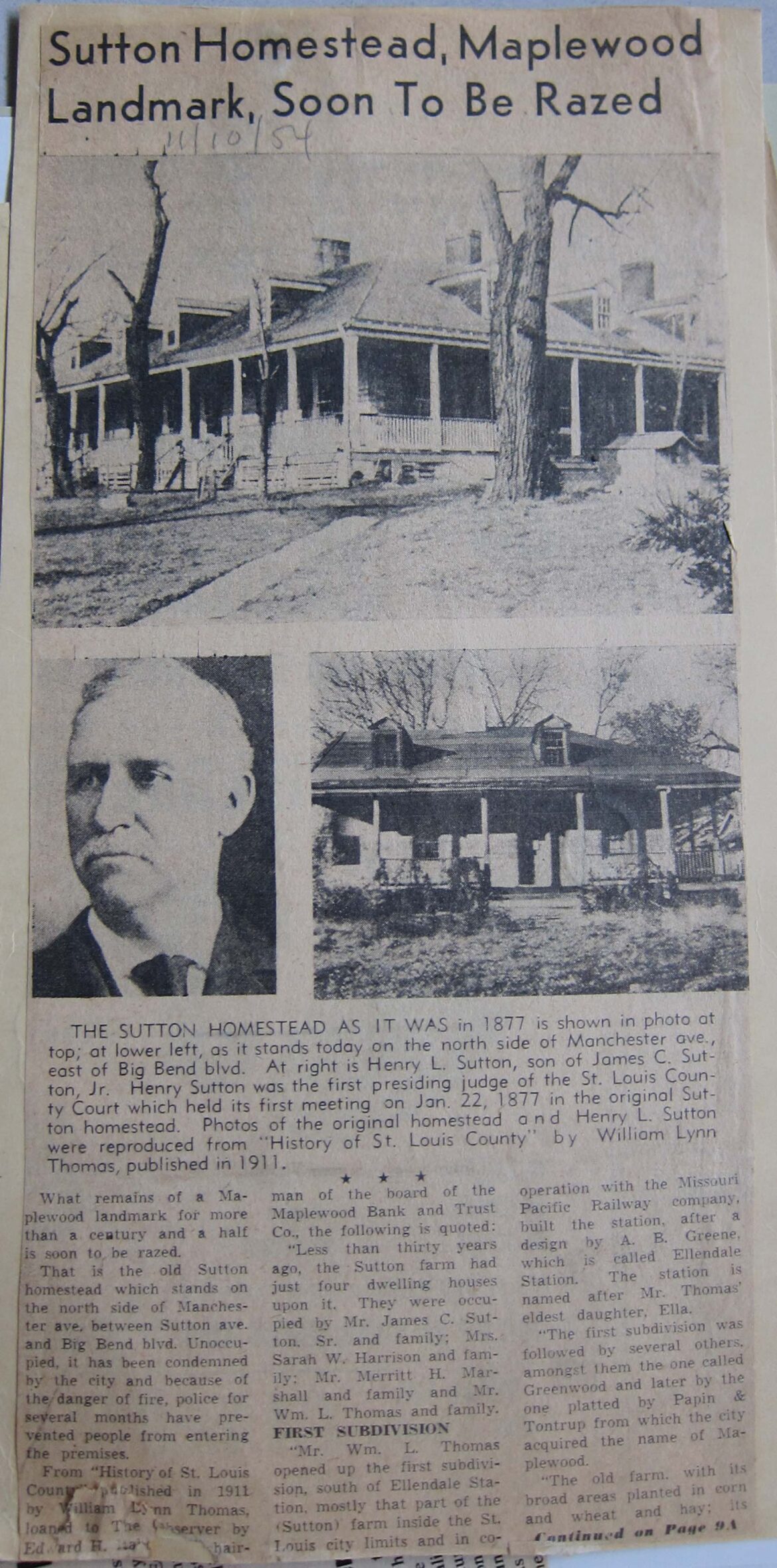
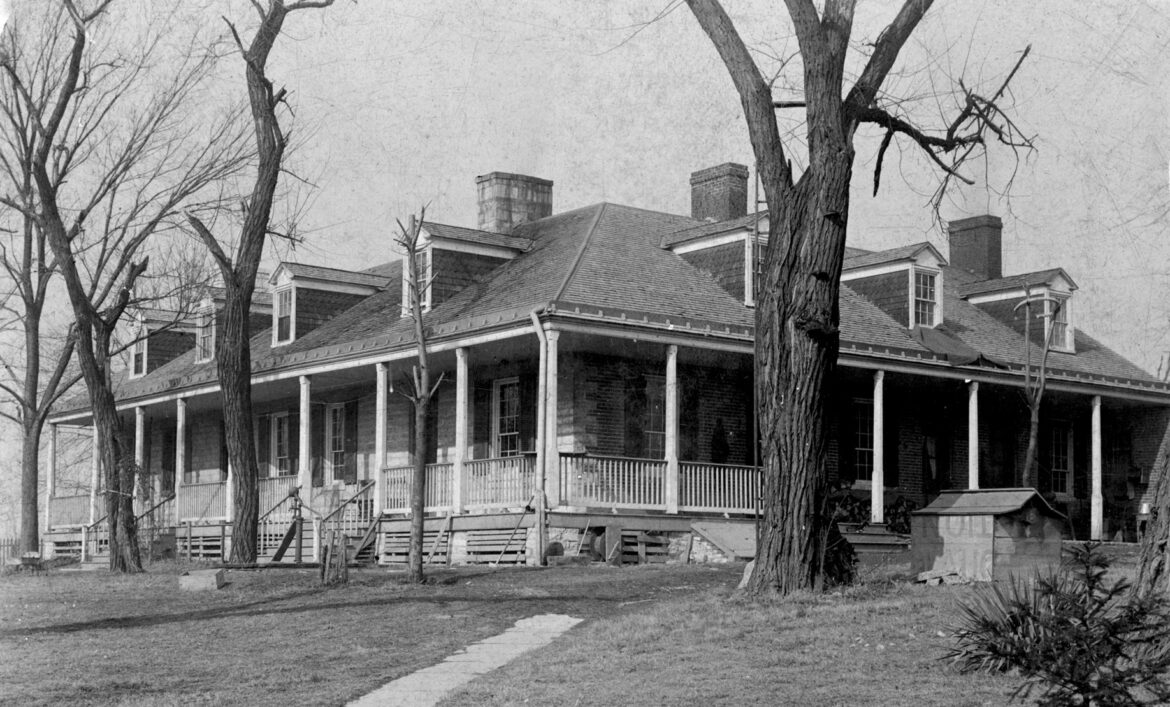
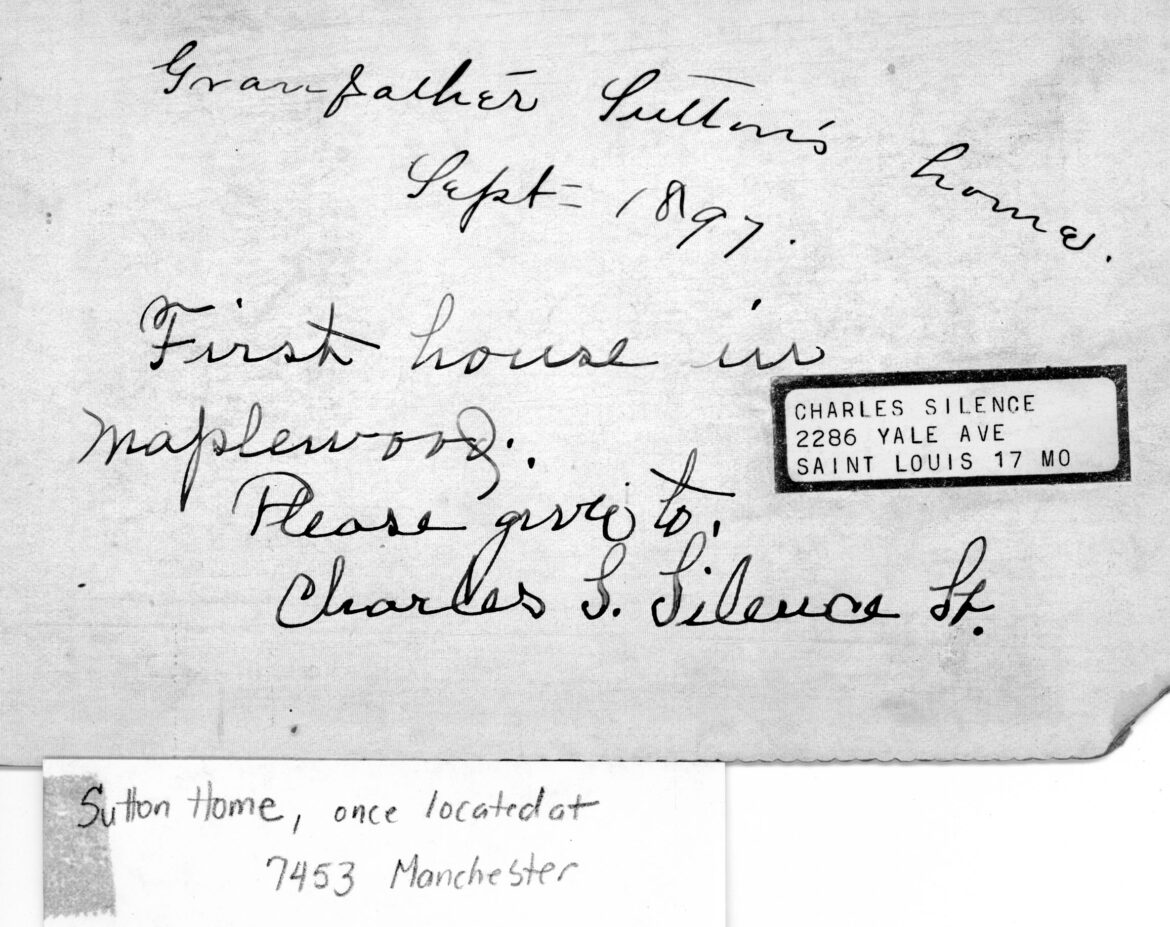
In my first post I ran images of advertisements for the stud services of racehorses that James C. Sutton had been involved with. Ms. Varilek sent me very high definition photographs of those. For those of you who are interested in them, tell me in the comments section and I’ll email copies to you.
Thanks again to Laura Varilek for this very fascinating collection of articles that you have shared with us.
If it weren’t so late I’d try and think of a couple of clever sentences to go out on but I’m tired. ‘Til next time.
Doug Houser March 28, 2021
A late addition: Laura also included this photograph of James’s son, Henry. You may recognize him from the newspaper article above. He was a very important fellow in our local history. He was the first to take the reins after St. Louis County was split from the City of St. Louis. He certainly must have been very active behind the scenes as well. He was well-known, respected and a successful auctioneer of real estate and who knows what else. More research is needed.
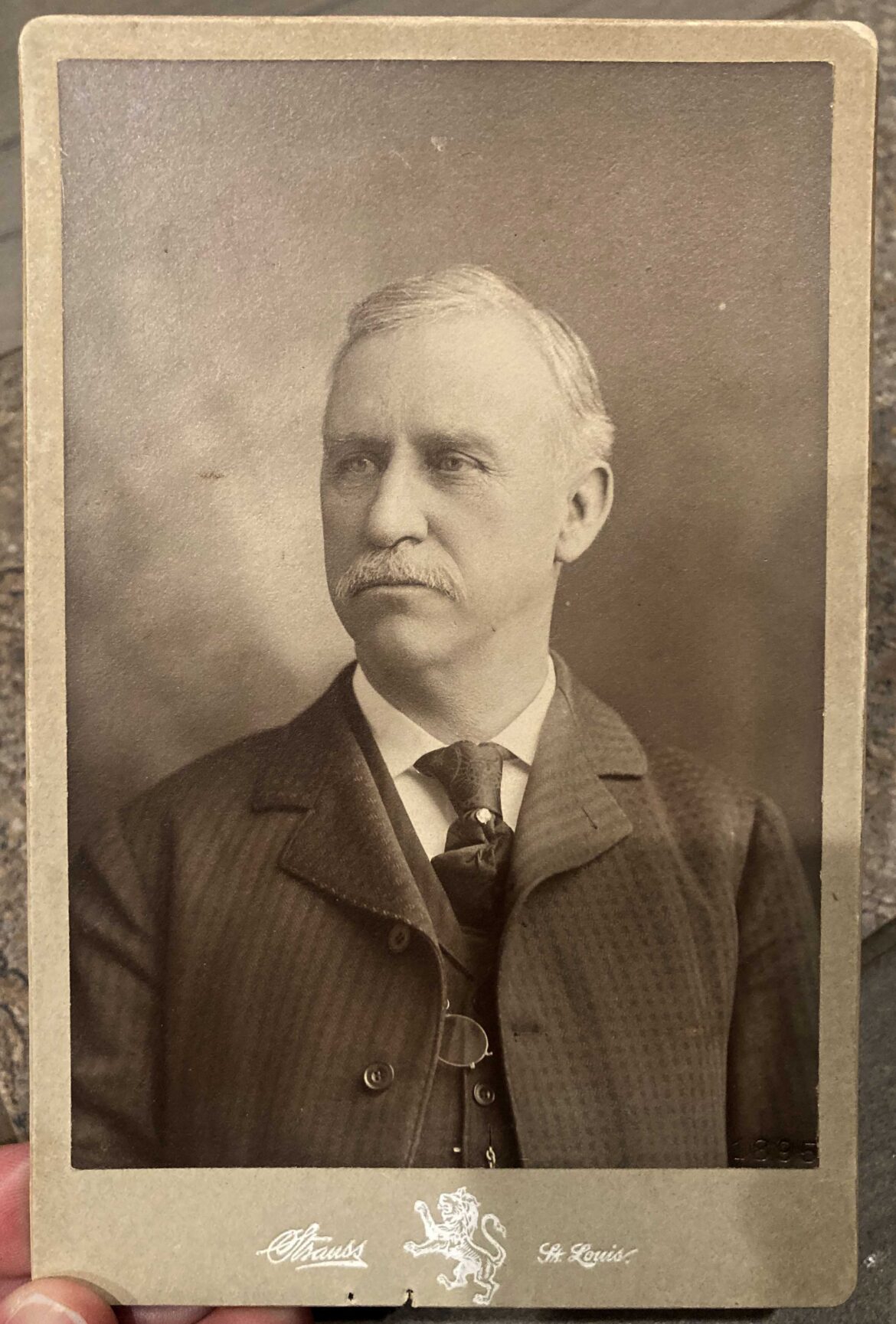
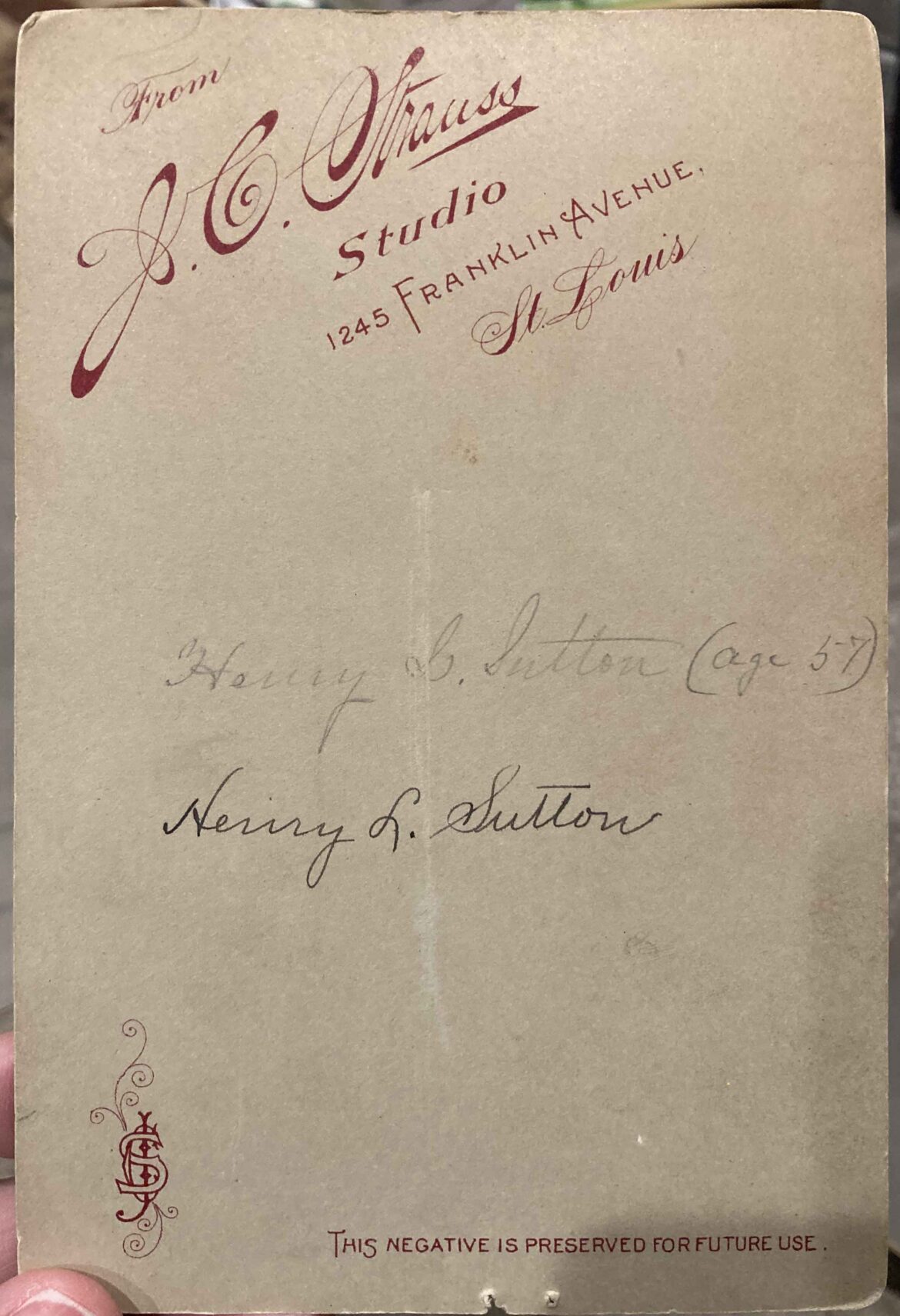
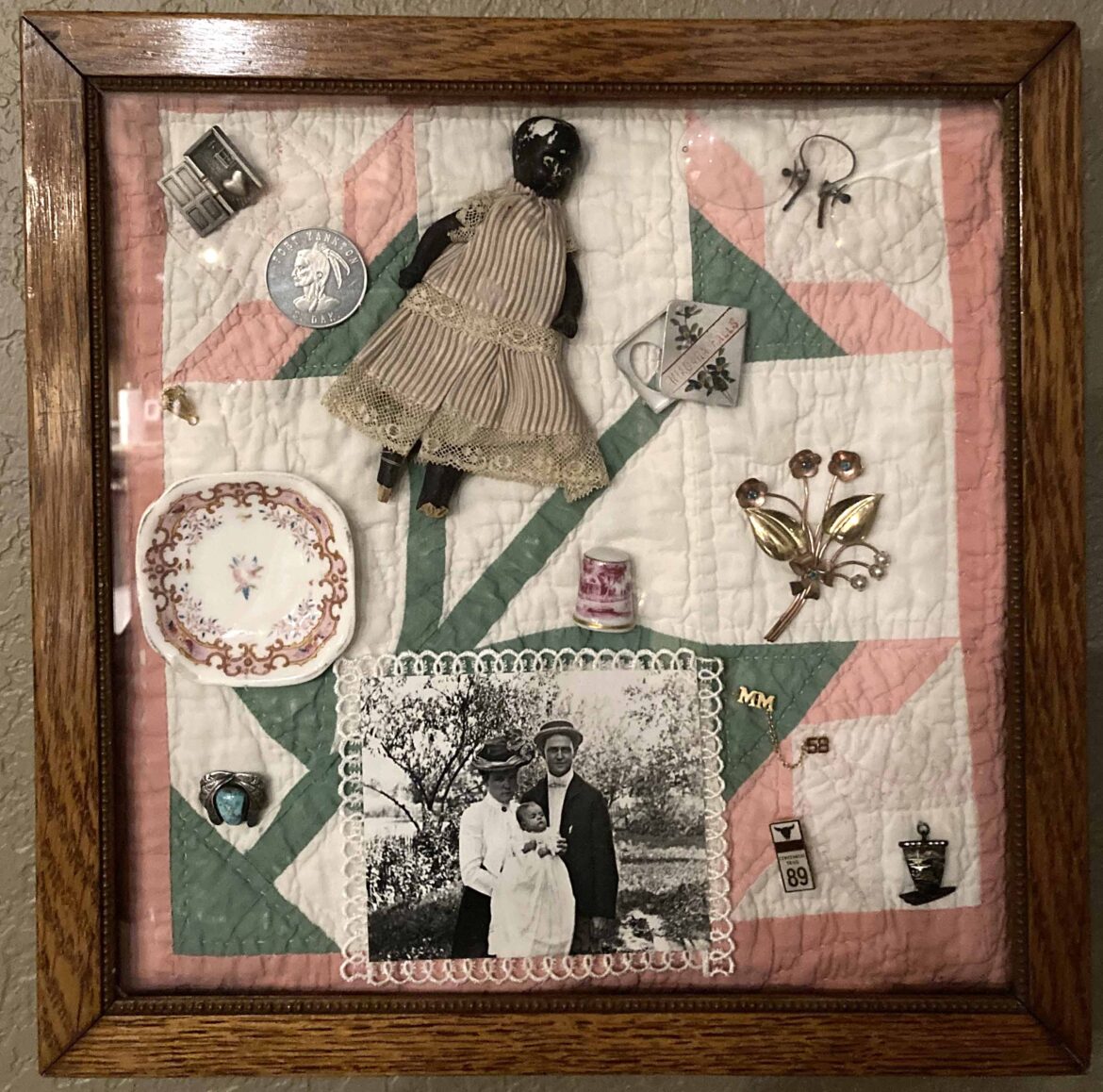
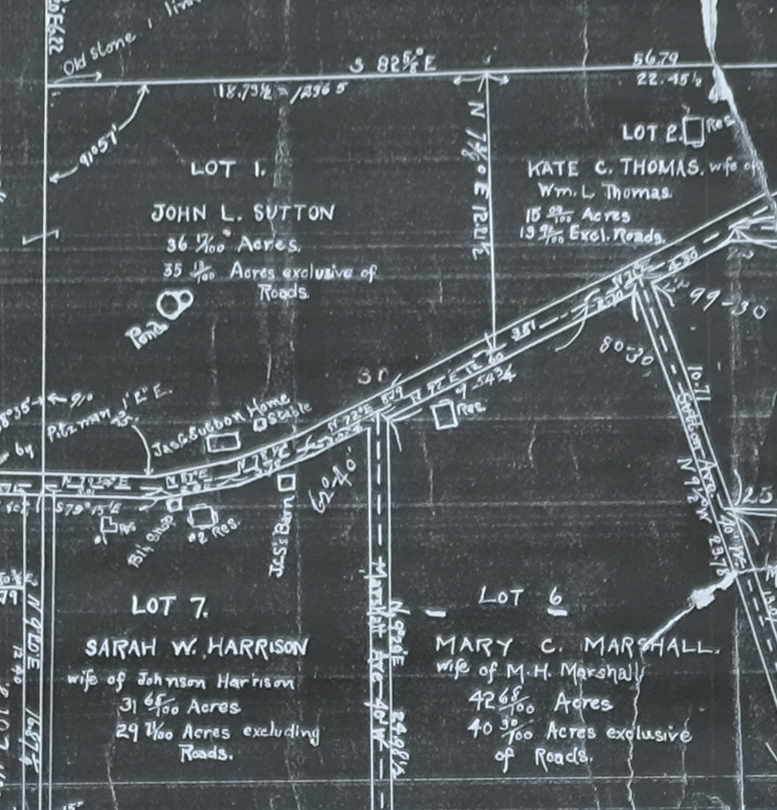
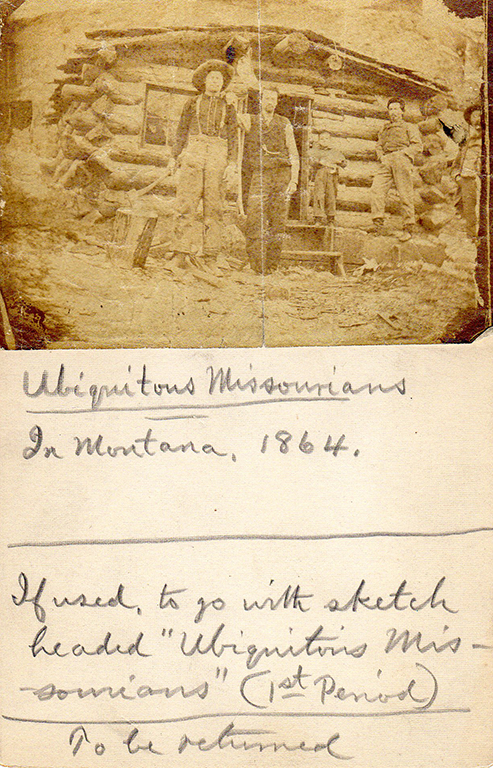

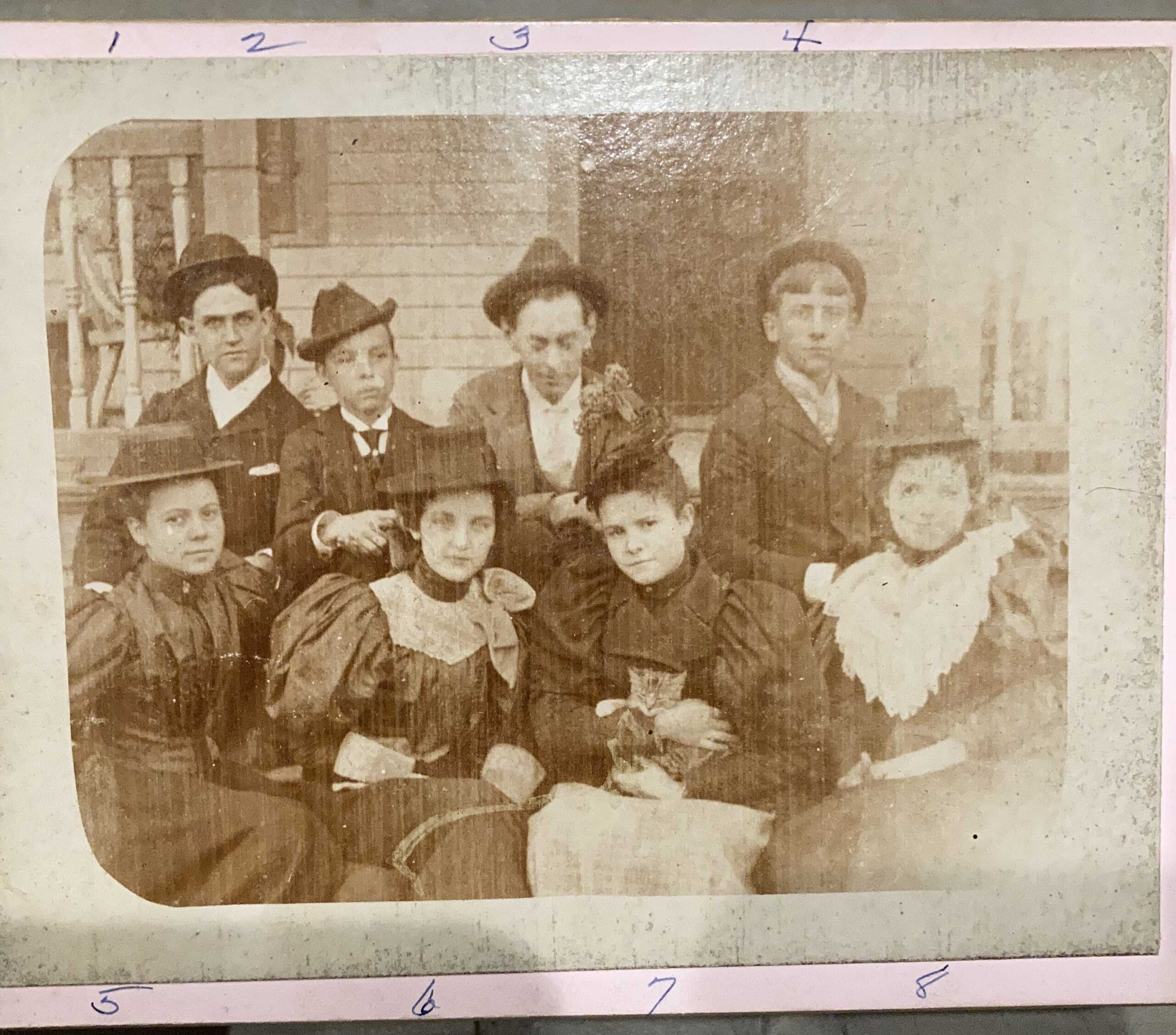
So informative, Doug. I loved the quilted memory box Laura’s mother gave her. What a treasure. Also, the story of the cattle drive in Montana reads like the outline of a movie (or a series!). Thanks for sharing this unique info.
Margaret, You are welcome. It is my pleasure.
Person arrested for being disloyal and another for being a rebel mail carrier and support of bushwacker? Don’t know exactly what those terms mean. I am only guessing but rebel mail carrier maybe a rebel spy type person? Maybe someone who hid or aided a bushwacker.
I think back to my grandfather who used to tell us little kids of his exploits growing up on the Kansas/Missouri border. He claimed to be not bald but was scalped by Indians and to have met Jesse James. I always thought them only tall tells but I do have to wonder about some of those stories especially after reading these stories and the travels west on the cattle drive.
Mark, The story is amazing. Much more complicated than we thought. Imagine having to leave your home for years because of political sympathies if you could call them that? It was actually about supporting an enemy attempting the overthrow of the government of the United States! Pretty serious stuff. I’m in no position to judge but they may have been lucky to have survived it. As for your uncle, I suspect he was really bald.
Doug, Gary here with a question. The platte map must have north on the bottom which would place the Sutton home on the south side of Manchester, but I thought it was on the north side.
Hey Gary, the map is oriented correctly with north at the top. I’m not sure what has got you flipped. The whole survey is reproduced on page 2 of that indispensable guide, Maplewood History – Volume Two. And I know there is no need to tell you that pristine copies are still available at Scheidt Hardware, on eBay, and from me (who will provide free delivery to folks in the area). Readers (in the interest of full disclosure) I’ll admit that I know that Gary already has a copy of Maplewood History – Volume Two.
Awesome post Doug, and I love all the interest that Dave P. and everyone else has for this type of history of your town. I am quite certain that the photo that Doug has of the Missourians in Montana is a picture that goes with the story in this post. Dave, I don’t know how you got the information from the Archives on the sympathizers but that is cool to see how there is some documentation that supports the story. I would be happy to help collect whatever data is out there. I have more stuff to share, I just can’t get it all done at one time.
Laura, My apologies. You mentioned the photograph that I have that goes with the story in this article. Something clicked and I just realized which image you were talking about. I’ll add it above. Thanks.
Laura and Doug, thanks for sharing. Amazing material. It’s going to be fun watching the photo of James Compton Senior spread across the web.
I never thought I would see a picture of the Humphreys House, so cool. In 1870, Sarah Wilgus was living there with her two children, Mary and Chas Humphreys. Their dad Charles died in 1869. Living with them is Sarah’s sister Kate and her new husband William Lyman Thomas, a 23 year old dentist. The house was probably built before Sarah’s first child Mary was born, so circa 1865 and around at least to 1910.
Sarah’s second house built by Johnson Harrison was a bit older than the 1891 date Jos. S. Harrison has written on the back of the photo. Doug has a copy of a plat map online here showing the location of both houses dated I believe 1881? Great picture of the house and Sarah.
Okay so the typed letter… I grew up near the mouth of the Snake river at the delta of the Yakima and Columbia. Anyway, on a lark I decide to search these names in the Missouri Union Provost Marshal Database found here
https://s1.sos.mo.gov/Records/Archives/ArchivesDb/provost/
and well got the following hits:
12-28-1861 Patterson, Henry L. Saint Louis St. Louis “The Form of the Oath to the Recusants;” printed form appealing assessment of $400 and including loyalty oath; wishes to appear before commission and prove loyalty; F1382
12-28-1861 Patterson, Henry L. Saint Louis St. Louis Has received form, did not know affidavit was not sufficient; wishes to free himself of slander put upon him by rebel who hides behind official secrecy F1382
02-24-1862 Patterson, Henry L. Saint Louis St. Louis Oath of director of Pacific Railroad Co. F1382
08-19-1862 Marshall, Meritt H. Saint Louis Central Township Oath of Loyalty F1367
08-20-1862 Marshall, Meritt H. Saint Louis St. Louis Sworn statement about Johnson Harrison F1367
08-21-1862 Harrison, Johnson; Brown, John A.; Davis, James Saint Louis St. Louis Release on parole to report to Provost Marshal Leighton’s office. James Davis also known as James Davidson. F1587 0818 2053
08-22-1862 Harrison, Johnson; Brown, John A.; Davis, James; Wentworth, Robert S.; Richter, Charles; Keith, Timothy; Sullivan, Michael; Hill, David B.; Hill, Joseph; Bobb, John H.; Pentz, William; Dwyer, William; Tubbe, Bernard Saint Louis St. Louis Morning report of prisoners discharged from Gratiot Street Prison. F1587 0796 2042
08-25-1862 Patterson, P.; Patterson, Joe; Harris, Solon; Harris, Jim; Myers, Montgomery; Hyatt, Joe; Tunstall, Bob; Hurnes, James; Evans, Watt; Patterson, Ed; Douglass, Nic; Ferguson, James; Ferguson, Charles; Lewis, [unknown] Saint Louis St. Louis List of disloyal persons. F1587 0206 1894
05-23-1863 Johnson, Harrison Saint Louis St. Louis Statement that Greenberry R. Dunn of Marshall County, Kentucky was arrested in Ripley County and placed in Gratiot Street Prison, charged with being a rebel mail carrier, request for hearing F1307
02-28-1865 McBride, William; Herst, Hiram Saint Louis St. Louis Special Order 58, prepared by J. W. Barnes, Assistant Adjutant General; men held by provost marshal at St. Joseph, MO for disloyalty and supporting bushwhackers banished from state F1632 0016 14904
So, Hmm? Coincidence? Found nothing obvious for the other names in this database. I read the story more than twice.
Doug, I was going to post this on the 40southblog but then decided maybe Laura would like to get the chance to see it first and decide what to do with this info. Please forward it to her. I can help with ordering the files but won’t be doing it myself. Would love to hear what Johnson Harrison was arrested by union soldiers/agents? for though! Thanks, Dave P.
Unbelievably fascinating stuff you have located here, Dave. You really hit it out of the park this time. I haven’t heard from Laura yet so I take responsibility for the post. With her interest in her family history I don’t think she’ll object. Thanks so much for your work on this.
I would be interested in ordering those files, Dave. Can you instruct me as to how to go about it?
What a great story! Thank you, Ms. Varilek, for sharing.
I agree, Margarita. We owe Laura a big one!
Outstanding find(s), Doug!
They truly are, Peter. Thank you for your enthusiastic response.
This was such an interesting story! I had to read it all twice. Thank you so much gathering this information and for posting for all to enjoy.
You are very welcome, Nancy. Other than me you are probably the only person that has read it more than once. Thank you for all of the historic material from your family, the Fennells, that you have shared with us in the past.
Now those were some old photos!!! Is that 3 gas stations on the corner of Manchester and Big Bend? I tried to look as close as I could, but could not get names off the businesses. Thank you for sharing these great photos with us.
You are correct, Ms. Piles. There are three filling stations on the corners of Manchester and Big Bend. I’ll email you the highest resolution image that I have but I’m not sure if you’ll be able to read any of those signs. And you are very welcome.
What a really great story about traveling out West!
I thought so too, Patty. The fact that it was a bunch of folks from what would someday become our town just makes it more interesting. Thank you for commenting.
Perhaps they are the stone wall ( the obviously old part of it anyway) along the north side of ~8706 Manchester
Hey Brian from Bevo, I had to google that address to see the stone wall you mentioned. It is a nice looking wall but I doubt that any of it came from the Sutton mansion. This sort of limestone is very easy to get in this area. It is everywhere. Some years ago I did a series of posts called “Let’s Go Get Stoned.” Perhaps you might enjoy talking a look at them? This link will take you to the 6th in the series. It was the last one and contains links to all of the others.
https://40southnews.com/maplewood-history-lets-go-get-stoned-part-6/
Thank you for your comment.
Doug are you telling me that for 34 years or so there was a partially torn down house that was left standing? If so it seems there should be some images of the old messed up house. I cannot imagine something like that being allowed by the good folks of Maplewood. What became of those stones I wonder. Today I would think they would be repurposed into something in someone’s garden or retaining wall.
Yeah, I don’t know exactly, Mark. My guess is that after the fire the building was made habitable again by wrecking off the burned portion and closing up that end resulting in a building that was livable but half as large as the original. I also can’t imagine that the ruined version sat there uninhabited for that long. It was right in the middle of a rapidly growing business district. I do know that it was uninhabited for awhile before it was razed but I don’t know how long.
About the stones, a fellow, last name Hartman, I think, who owned an upholstery business on the corner of Margarette and Manchester told me that there were some suspicious large stones in his backyard. His home was on Margarette only two or three doors from Manchester. I suspect that they could be foundation stones from one of the outbuildings on the Sutton farm. I’ve thought that someday I would check that out but haven’t done it yet.
Comments are closed.